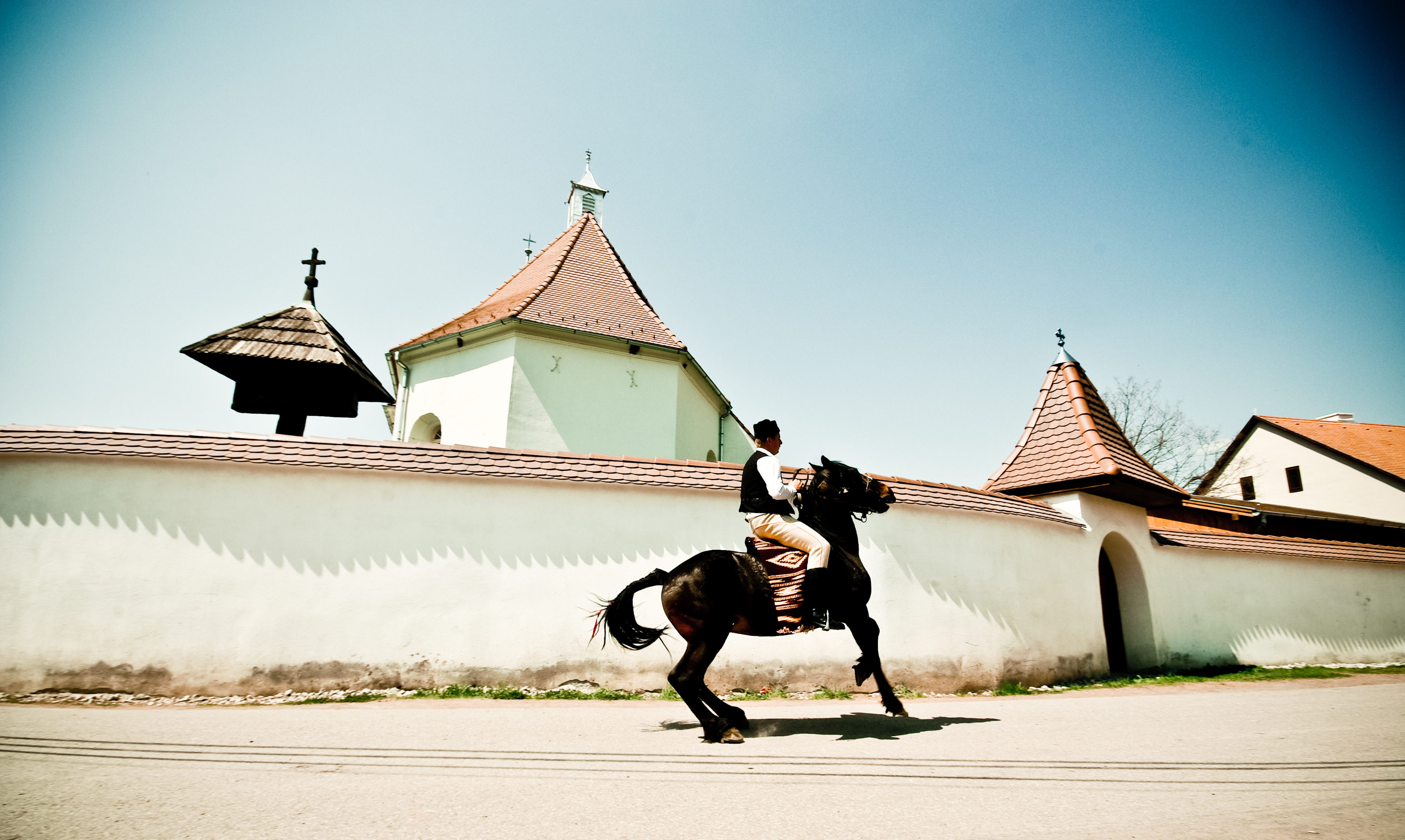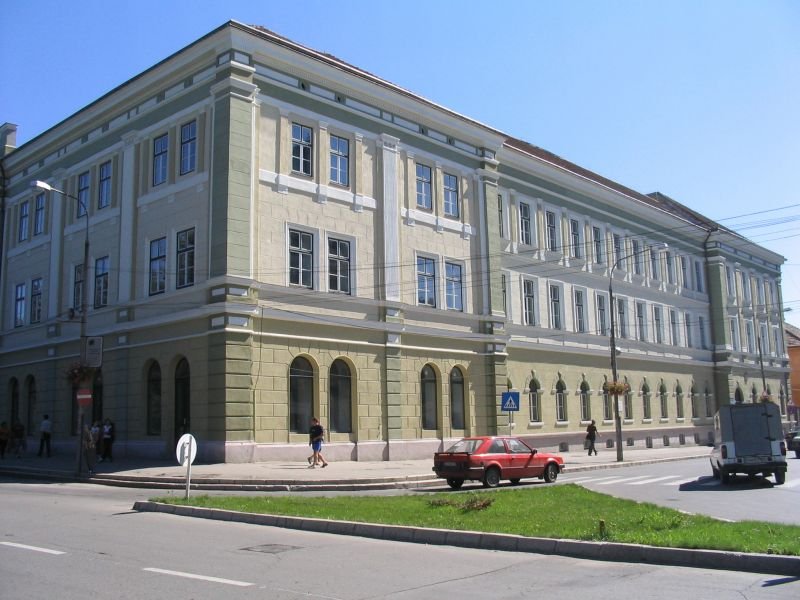|
Sândominic
Sândominic ( hu, Csíkszentdomokos, Hungarian pronunciation: ) is a commune in Harghita County, Romania. It lies in the Székely Land, an ethno-cultural region in eastern Transylvania. It is composed of a single village, Sândominic. Demographics At the 2011 census, the commune had a population of 6,110; out of them, 97% were Hungarian, 1.4% were Roma and 0.4% were Romanian. 97% of the commune population are Roman Catholic, 0.4% are Orthodox, 0.4% are Reformed and 0.1% are Unitarian. 2011 census results, Institutul Național de Statistică< ...
[...More Info...] [...Related Items...] OR: [Wikipedia] [Google] [Baidu] |
Harghita County
Harghita (, hu, Hargita megye, ) is a county (județ) in the center of Romania, in eastern Transylvania, with the county seat at Miercurea Ciuc. Demographics 2002 census In 2002, Harghita County had a population of 326,222 and a population density of 52/km2. * Hungarians – 84.62% (or 276,038) * Romanians – 14.06% (or 45,870) * Romani – 1.18% (or 3,835) * Others – 0.14% 2011 census In 2011, it had a population of 302,432 and a population density of 46/km2. * Hungarians – 85.21% (or 257,707) * Romanians – 12.96% (or 39,196) * Romani * Others – 1.76% (or 5,326). Harghita county has the highest percentage of Hungarians in Romania, just ahead of Covasna county. The Hungarians form the majority of the population in most of the county's municipalities, with Romanians concentrated in the northern and eastern part of the county (particularly Toplița and Bălan), as well as in the enclave of Voșlăbeni. The Székelys of Harghita are mostly Roman Catholic, ... [...More Info...] [...Related Items...] OR: [Wikipedia] [Google] [Baidu] |
Michael The Brave
Michael the Brave ( ro, Mihai Viteazul or ; 1558 – 9 August 1601), born as Mihai Pătrașcu, was the Prince of Wallachia (as Michael II, 1593 – 1601), Prince of Moldavia (1600) and ''de facto'' ruler of Transylvania (1599 – 1600). He is considered one of Romania's greatest national heroes. Since the 19th century, Michael the Brave has been regarded by Romanian nationalists as a symbol of Romanian unity, as his reign marked the first time all principalities inhabited by Romanians were under the same ruler. His rule over Wallachia began in the autumn of 1593. Two years later, war with the Ottomans began, a conflict in which the Prince fought the Battle of Călugăreni, resulting in a victory against an army nearly three times the size of the army of Michael the Brave, considered one of the most important battles of his reign. Although the Wallachians emerged victorious from the battle, Michael was forced to retreat with his troops and wait for aid from his allies, P ... [...More Info...] [...Related Items...] OR: [Wikipedia] [Google] [Baidu] |
Olt (river)
The Olt (Romanian and Hungarian; german: Alt; la, Aluta or ', tr, Oltu, grc, Ἄλυτος ''Alytos'') is a river in Romania. It is long, and its basin area is . It is the longest river flowing exclusively through Romania. Its average discharge at the mouth is . Its source is in the Hășmaș Mountains of the eastern Carpathian Mountains, near Bălan, rising close to the headwaters of the river Mureș. It flows through the Romanian counties Harghita, Covasna, Brașov, Sibiu, Vâlcea and Olt. The river was known as ''Alutus'' or ''Aluta'' in Roman antiquity. Olt County and the historical province of Oltenia are named after the river. Sfântu Gheorghe, Râmnicu Vâlcea and Slatina are the main cities on the river Olt. The Olt flows into the Danube river near Turnu Măgurele. Settlements The main cities along the river Olt are Miercurea Ciuc, Sfântu Gheorghe, Făgăraș, Râmnicu Vâlcea and Slatina. The Olt passes through the following communes, from source to mouth ... [...More Info...] [...Related Items...] OR: [Wikipedia] [Google] [Baidu] |
Bălan
Bălan (german: Kupferbergwerk; hu, Balánbánya, ) is a town in Harghita County, Transylvania, Romania. It has historically been one of Transylvania and Romania's most important centers for copper mining, but its mines are no longer operational. Its Romanian name means "blond", the German name means "copper mine" while the Hungarian name means "Balán mine". Geography The town lies in the Ciuc Depression (Romanian Depresiunea Ciucului, hu, Csíki-medence). It is surrounded by the Hășmaș Mountains The Hășmaș Mountains (Romanian: ''Munții Hășmaș''; Hungarian: ''Hagymás-hegység'') are limestone and sandstone massifs located in Romania, in the Inner Eastern Carpathians group of the Eastern Carpathian Mountains. They belong to the ... (Hășmașul Mare and Hășmașul Mic). The town's altitude is ; this rises to at the highest peak of the Hășmaș Mountains. Bălan is crossed by the Olt River. Climate The temperate continental climate has an average temperatur ... [...More Info...] [...Related Items...] OR: [Wikipedia] [Google] [Baidu] |
Commune In Romania
A commune (''comună'' in Romanian) is the lowest level of administrative subdivision in Romania. There are 2,686 communes in Romania. The commune is the rural subdivision of a county. Urban areas, such as towns and cities within a county, are given the status of ''city'' or ''municipality''. In principle, a commune can contain any size population, but in practice, when a commune becomes relatively urbanised and exceeds approximately 10,000 residents, it is usually granted city status. Although cities are on the same administrative level as communes, their local governments are structured in a way that gives them more power. Some urban or semi-urban areas of fewer than 10,000 inhabitants have also been given city status. Each commune is administered by a mayor (''primar'' in Romanian). A commune is made up of one or more villages which do not themselves have an administrative function. Communes, like cities, correspond to the European Union's level 2 local administrative uni ... [...More Info...] [...Related Items...] OR: [Wikipedia] [Google] [Baidu] |
Csíkszék
Csíkszék () was one of the Székely seats in the historical Székely Land. It administered two sub-seats (Hungarian: ''fiúszék'', Latin: ''sedes filialis''), namely Gyergyószék and Kászonszék. It was divided on the natural borders of the region, as the main territory of Csíkszék lay in the valley of the Olt River, Gyergyószék lay in the valley of the Maros river, while Kászonszék lay in the valley of the Kászon river. Population The religious composition of Csíkszék's population in 1867 was as follows: *Roman Catholic: 96,525 *Greek Catholic: 13,028 *Eastern Orthodox Eastern Orthodoxy, also known as Eastern Orthodox Christianity, is one of the three main branches of Chalcedonian Christianity, alongside Catholicism and Protestantism. Like the Pentarchy of the first millennium, the mainstream (or " canonical ...: 17 *Others: 1.667 *Total: 111,237 Gallery Franciscan Church and Monastery Csiksomlyo.jpg, The Franciscan Church and Monastery in Csíksomly ... [...More Info...] [...Related Items...] OR: [Wikipedia] [Google] [Baidu] |
Interdict
In Catholic canon law, an interdict () is an ecclesiastical censure, or ban that prohibits persons, certain active Church individuals or groups from participating in certain rites, or that the rites and services of the church are banished from having validity in certain territories for a limited or extended time. Before 1917 1917 Code of Canon Law Distinctions Under the 1917 Code of Canon Law, interdicts were either ''personal'', if applied directly to a person, wherever this person was, or ''local'', if applied directly to a locality and only indirectly to the people in that place whether permanently or only on a visit. Only the Holy See was empowered to impose a general interdict on a diocese or State or a personal interdict on the people of a diocese or country, but bishops too could impose a general interdict on a parish or on the people of a parish or a particular interdict on a place (such as a church or oratory, an altar or a cemetery) or a person. Effects A lo ... [...More Info...] [...Related Items...] OR: [Wikipedia] [Google] [Baidu] |
Pope Clement VIII
Pope Clement VIII ( la, Clemens VIII; it, Clemente VIII; 24 February 1536 – 3 March 1605), born Ippolito Aldobrandini, was head of the Catholic Church and ruler of the Papal States from 2 February 1592 to his death in March 1605. Born in Fano, Italy to a prominent Florentine family, he initially came to prominence as a canon lawyer before being made a Cardinal-Priest in 1585. In 1592 he was elected Pope and took the name of Clement. During his papacy he effected the reconciliation of Henry IV of France to the Catholic faith and was instrumental in setting up an alliance of Christian nations to oppose the Ottoman Empire in the so-called Long War. He also successfully adjudicated in a bitter dispute between the Dominicans and the Jesuits on the issue of efficacious grace and free will. In 1600 he presided over a jubilee which saw many pilgrimages to Rome. He presided over the trial and execution of Giordano Bruno and implementing strict measures against Jewish res ... [...More Info...] [...Related Items...] OR: [Wikipedia] [Google] [Baidu] |
Battle Of Șelimbăr
The Battle of Șelimbăr, or Battle of Sellenberk (; ), took place on 18 October 1599 between the Romanian army of Michael the Brave () and the Transylvanian-Kingdom of Hungary, Hungarian army of Andrew Báthory (). The battle was fought near the village of Șelimbăr ( hu, links=no, Sellenberk) close to Sibiu (german: links=no, Hermannstadt; hu, links=no, Nagyszeben). Background Michael the Brave marched into Transylvania to fight against the Ottoman Empire, Ottomans. The neighboring rulers Andrew Báthory in Transylvania and Ieremia Movilă in Moldavia were friendly towards Polish–Lithuanian Commonwealth, Poland. In 1598, Michael signed a treaty of peace with the Ottomans, however both sides knew that the issue was far from settled. When Transylvania fell under the influence of Poland, which preserved friendly relations with the Ottomans, a hostile ring closed around Wallachia. Only the Habsburgs were prepared to ally themselves with Michael. The treaty, signed in Prague o ... [...More Info...] [...Related Items...] OR: [Wikipedia] [Google] [Baidu] |
Brașov
Brașov (, , ; german: Kronstadt; hu, Brassó; la, Corona; Transylvanian Saxon: ''Kruhnen'') is a city in Transylvania, Romania and the administrative centre of Brașov County. According to the latest Romanian census (2011), Brașov has a population of 253,200 making it the 7th most populous city in Romania. The metropolitan area is home to 382,896 residents. Brașov is located in the central part of the country, about north of Bucharest and from the Black Sea. It is surrounded by the Southern Carpathians and is part of the historical region of Transylvania. Historically, the city was the center of the Burzenland, once dominated by the Transylvanian Saxons, and a significant commercial hub on the trade roads between Austria (then Archduchy of Austria, within the Habsburg monarchy, and subsequently Austrian Empire) and Turkey (then Ottoman Empire). It is also where the national anthem of Romania was first sung. Names Brassovia, Brassó, Brașov, etc. According to Dragoș ... [...More Info...] [...Related Items...] OR: [Wikipedia] [Google] [Baidu] |
Sfântu Gheorghe
Sfântu Gheorghe (; hu, Sepsiszentgyörgy or ''Szentgyörgy'' ; yi, סנט דזשארדזש; English lit.: ''Saint George'') is the capital city of Covasna County, Romania. Located in the central part of the country and in the historical region of Transylvania, it lies on the Olt River in a valley between the Baraolt Mountains and Bodoc Mountains. The city administers two villages, Chilieni (''Kilyén'') and Coșeni (''Szotyor''). History Sfântu Gheorghe is one of the oldest cities in Transylvania, the settlement first having been documented in 1332. The city takes its name from Saint George, the patron of the local church. Historically it was also known in German as ''Sankt Georgen''. The "sepsi" prefix (''sebesi'' → ''sepsi'', meaning "of Sebes") refers to the area which the ancestors of the local Székely population had inhabited before settling to the area of the town. The previous area of their settlement was around the town of "Sebes" (now: Sebeș) which later bec ... [...More Info...] [...Related Items...] OR: [Wikipedia] [Google] [Baidu] |





